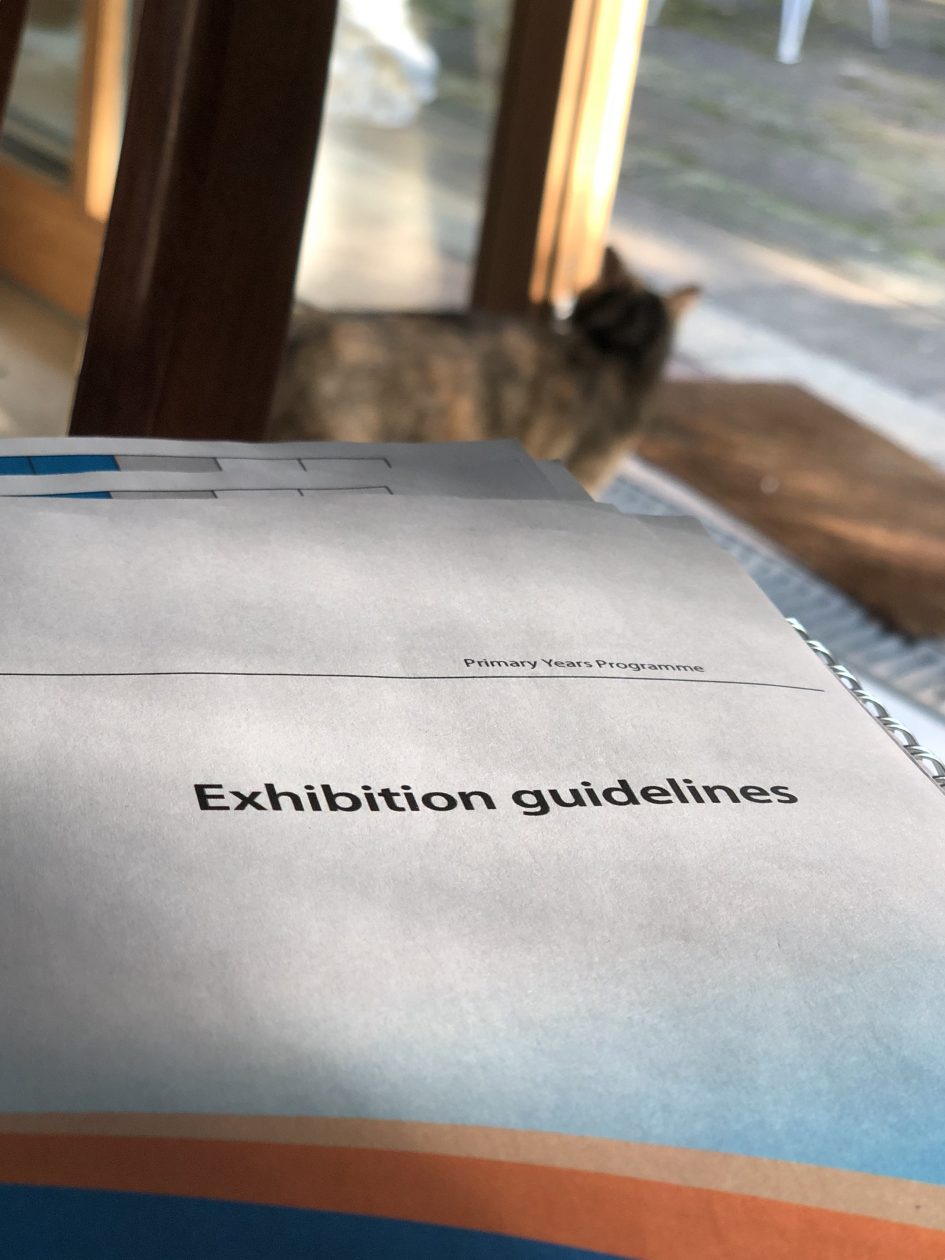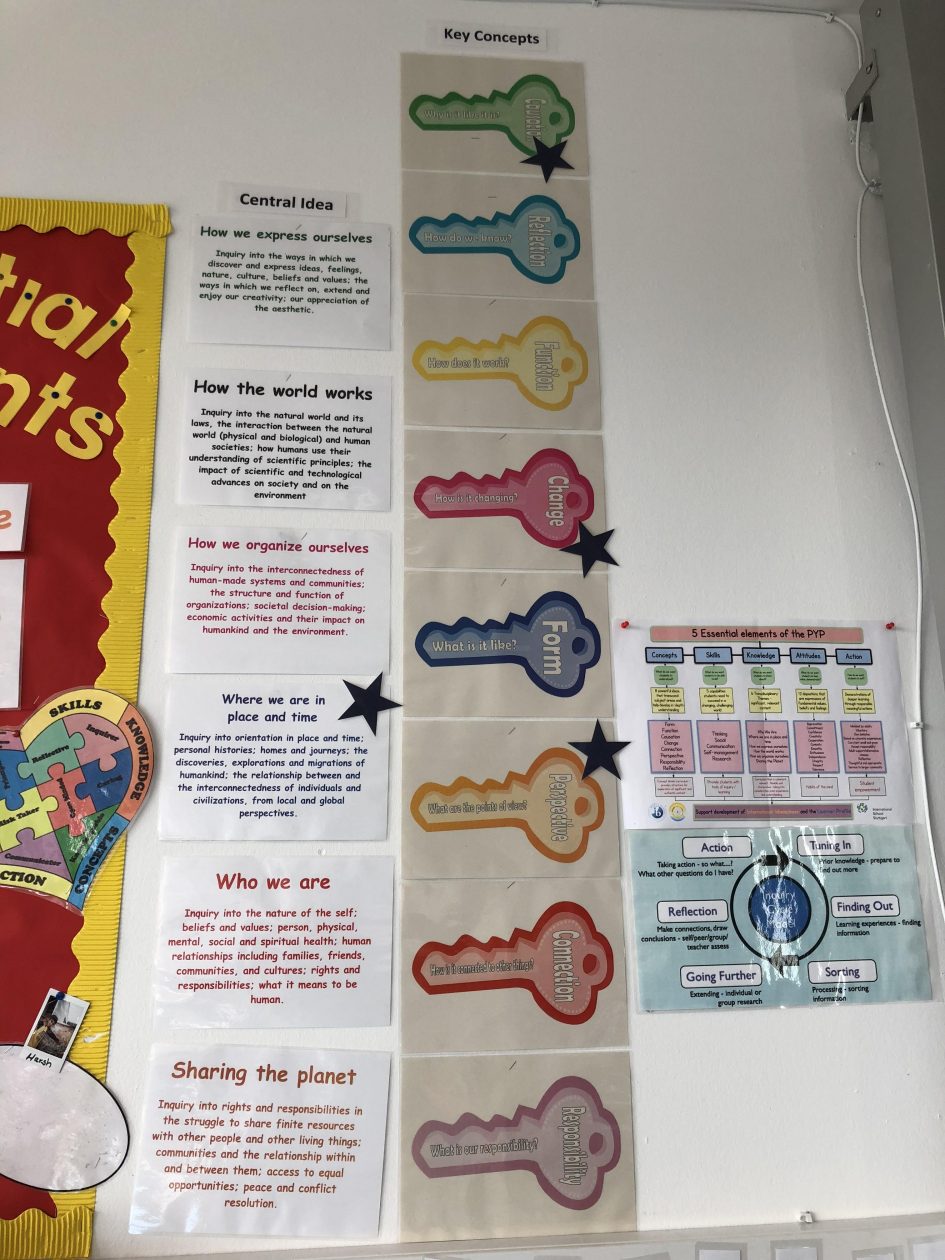I have successfully worked my way through all of the grade levels during my first month at ISS and have been able to teach and assist in all of the levels of progression that are offered at the Lower School… except for Grade 5.
This was done purposely during planning because it is now the time for the students in grade 5 to be focusing in on preparing for the exhibition where they will need to have investigated a topic independently and organised a presentation centred around the issue.
My job for the next month of my placement is to assist in the teaching of the grade 5 students in their exhibition, which are all unique to the child. So, my dynamic as a teacher will need to adjust to fit the PYP once again.
Within the Primary Years Programme Exhibition guidelines (2008), it outlines the exhibition as being a key event that displays all of the skills a student has built up during their time in the international education system and it allows students to showcase their findings and actions that they have done to work through a real-life problem in the world.

More Documentation – The guideline reading has been really beneficial for me to get a better understanding of what the overall framework looks like and must feel like in order for a school to be truly considered an IB school.
Purpose:
The purpose of the exhibition is for the children in their last year before moving into the middle school to really go in a large amount of detail during their inquiries that they predominately do in a collaborative manner with their peers. It also allows students to really show their own learning on both an individual and group level basis. This is because, in the run up to the exhibition, the students are continually reflecting on their learning journeys with their teachers, their mentors and their peers.
The Basic Outline:
- Students work towards the exhibition during (normally) the last term and it culminates towards a big event day where students can showcase their learning through a specific topic of their choice that interlinks with the central idea.
- The exhibition itself must enable all the attributes of the learner profile to be showcased, whilst also incorporating the key concepts and also making sure that the transdisciplinary themes and skills are being utilised. Overall it is the grand finale of the PYP before students move onto the next phase into the middle school/secondary education.
- The students need to also cover all of the “subject areas” with the exhibition incorporating an artistic component (which could be art, writing, music or a drama piece; it must relate to the expressive arts subject areas), a usage of mathematics (data handling in our case), writing (speech, interviews, research) and technology (using technology to create websites or to research information). Another other area can also be tapped into with their action – some are doing experiments to collect results (science) and others are looking into the background of a particular event (history). The pathways are really open to interpretation so long as they interlink with the central idea and the key concepts of the PYP.

The Central Ideas & Key Concepts – these are core to the PYP programme and the exhibition as a whole, as the exhibition is showcasing all of the skills students have culminated up to this point in their time in education.
Now, seeing this in practice, I have really found that the exhibition really holds a strong place in the eyes of the children that are actually part of the process within grade 5. This is because they are choosing a topic that both interests them but also a topic that is an issue in society that they can bring awareness to and even bring about change towards. For being aged 10-11, the topics are really hard-hitting: racism, anorexia, warfares in home countries, air pollution and many more topics have been chosen by the children. What I’ve found is that the issue really is of a great passion for the children. In the words of the Exhibition guidelines, it should “offer the students the opportunity to explore knowledge that is significant and relevant” (International Baccalaureate, 2008, P.2)
Within these topics then, is where teaching can be worked within the frameworks that we are used to. Data handling and graphs are the centred topic within mathematics so many students are creating surveys and then analysing the data they have collected centred around their topic, thus creating a duality product of inquiry-based knowledge interlinking with the advancement of skills within a particular “subject area” (however, the subjects are not so regimented in comparison to other curriculums).
This then all allows for more freedoms for teaching, but also places more constraints on it as well. It is much harder to do a whole class lesson with this approach to learning because the children are very individual in their specific areas of inquiry. However, what can be done instead is the introduction and advancement of specific skills – how to analyse sources, how to construct grafts, how to write a speech and other useful approaches needed to conduct the exhibition.

The children are continually reminded by their environment of what they are capable of when they work towards being the best versions of themselves. Not only this, but also focusing on reflecting across the journey of learning.
Looking beyond this stage of learning, I can see how it is really preparing the students for the futures ahead. They are required to maintain a log of their references (something that rings true at university level) through NoodleTool. This way, the students are not just plagiarising from their sources and are seeing the relevance of crediting where they have found their information. Then the topics themselves and the process of finding action to try and make a difference towards the problem really emphasises the internationalism within the learner profile that the school strives to achieve. It shows students from an early age that, through drive and determination, they can truly make a difference once they have established a strong ground of research behind a topic.
What I also find is that because there is no standardised testing in the system (or not as heavily as other systems) the students are really being able to explore as much as they want to with their topic. It is establishing an environment where students continually want to be doing their best because it is those that reap the best benefits. There’s no need for extrinsic motivation because the children realise that the learning is for themselves. This also interconnects with another area of the exhibition and that is the reflective journal. I knew straight away what this meant for the students being that for this very module I have to maintain reflection around my learning. The students are required to document their progress in their exhibition weekly in the run up to the event and create goals. These goals are then self-assessed – “was I too ambitious?”, “do I need to work harder next time?” and “where do I go next?”. Regulation and self-awareness are then also advanced because students are checking in with themselves on what they’ve done. It is not a focus on what someone else believes upon their progress, because at the end of the day the learning is for them.
Taking this outlook on the concept of the Grade 5 Exhibition has been very helpful for my practice because it allows me to go in with my time with the grade 5s with a greater understanding of what is both required of them and what is required of me as a teacher that is directing them and aiding them in their learning.
Reference:
International Baccalaureate (2008) Primary Years Programme: Exhibition guidelines. International Baccalaureate Organization: Cardiff.
